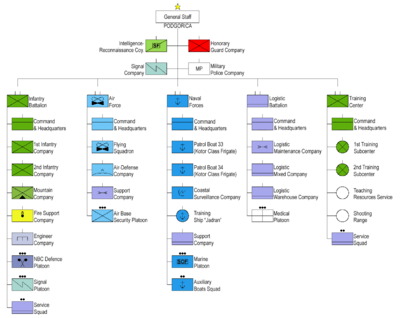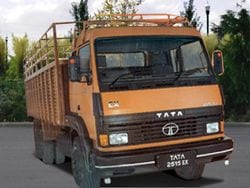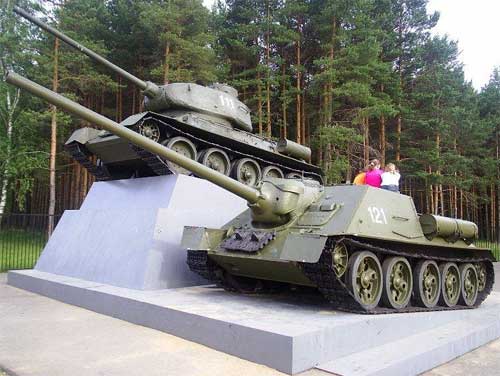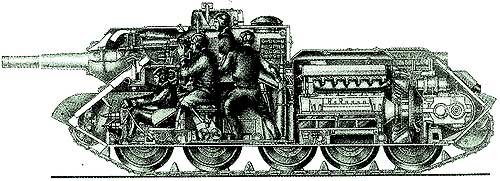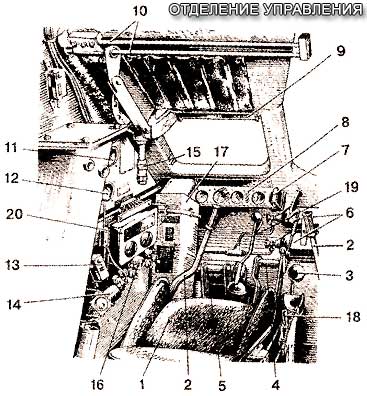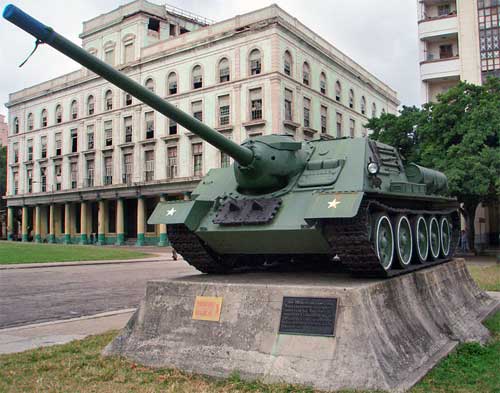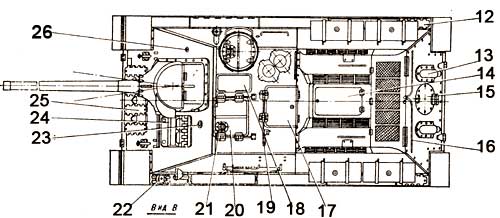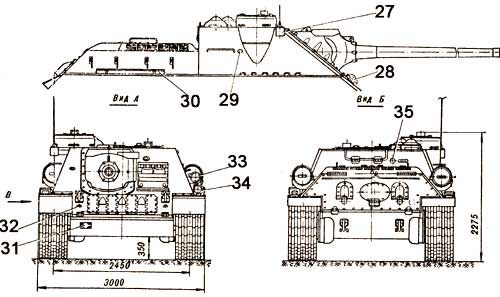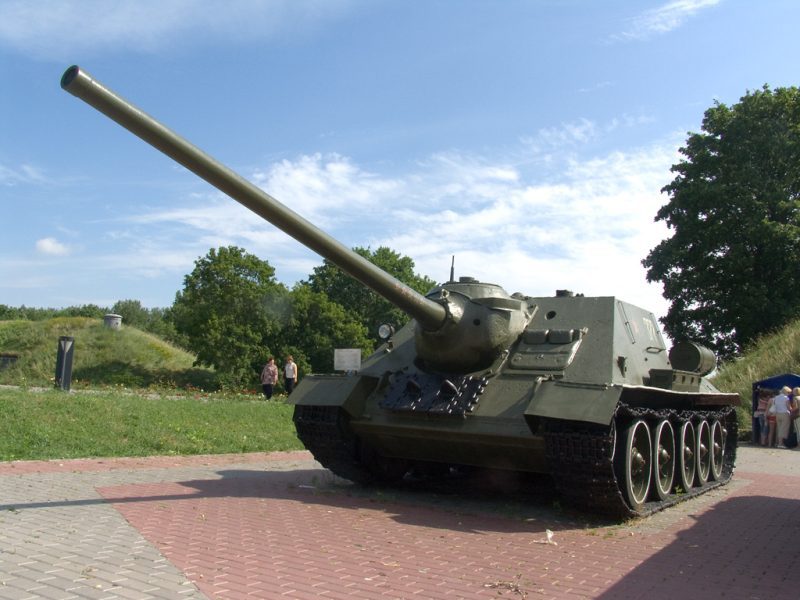
The SU-100 is based on the T-34-85 tank
The SU-100 is based on the T-34-85 tank
The self-propelled artillery mount SU-100 (“Object 138”) was developed in 1944 by the UZTM design bureau (Uralmashzavod) under the general supervision of L.I. Gorlitsky. The leading engineer of the machine was G.S. Efimov. During the development period, the self-propelled unit had the designation "Object 138". The first prototype of the unit was produced at UZTM together with plant No. 50 of the NKTP in February 1944. The machine passed factory and field tests at the Gorohovets ANIOP in March 1944. Based on the test results in May - June 1944, a second prototype was made, which became the prototype for serial production. Serial production was organized at UZTM from September 1944 to October 1945. During the Great Patriotic War from September 1944 to June 1, 1945, there were 1560 self-propelled guns that were widely used in battles at the final stage of the war. A total of 2495 SU-100 self-propelled guns were produced during serial production. Self-propelled installation The SU-100 was created on the basis of the T-34-85 medium tank and was intended to fight the German heavy tanks T-VI "Tiger I" and TV "Panther". It belonged to the type of closed self-propelled units. The layout of the installation was borrowed from the self-propelled gun SU-85. In the control compartments in the bow of the hull on the left was the driver. In the fighting compartment, the gunner was located to the left of the gun, and the vehicle commander was to the right. The loader's seat was located behind the gunner's seat. Unlike the previous model, the working conditions of the vehicle commander were significantly improved, the workplace of which was equipped in a small sponson on the starboard side of the fighting compartment.
On the roof of the wheelhouse above the commander's seat, a fixed commander's turret with five viewing slots for a circular view was installed. The hatch cover of the commander's cupola with a built-in MK-4 viewing device rotated on a ball chase. In addition, a hatch was made in the roof of the fighting compartment for installing a panorama, which was closed with double-leaf covers. An MK-4 observation device was installed in the left hatch cover. There was a viewing slot in the aft deckhouse. The driver's workplace was in front of the hull and was shifted to the port side. The layout feature of the control compartment was the location of the gear lever in front of the driver's seat. The crew got into the car through a hatch in the rear of the roof of the cabin (on the machines of the first releases - double-leaf, located in the roof and aft sheet of the armored cabin), the commander's and driver's hatches. The landing hatch was located on the bottom of the hull in the fighting compartment on the right side of the vehicle. The manhole cover opened down. For ventilation of the fighting compartment, two exhaust fans were installed in the roof of the cabin, covered with armored caps.
1 - driver's seat; 2 - control levers; 3 – a pedal of giving of fuel; 4 - brake pedal; 5 – main clutch pedal; 6 - cylinders with compressed air; 7 – a lamp of illumination of a board of control devices; 8 - panel of control devices; 9 - viewing device; 10 – torsion bars of the hatch opening mechanism; 11 - speedometer; 12 - tachometer; 13 - device No. 3 TPU; 14 - starter button; 15 – hatch cover stopper handle; 16 - signal button; 17 – casing of the front suspension; 18 – fuel supply lever; 19 - backstage lever; 20 - electrical panel The engine compartment was located behind the fighting one and was separated from it by a partition. In the middle of the engine compartment, an engine was installed on a sub-engine frame with the systems that provided it. On both sides of the engine, two radiators of the cooling system were located at an angle, an oil cooler was mounted on the left radiator. On the sides, one oil cooler and one fuel tank were installed. Four storage batteries were installed on the bottom in racks on both sides of the engine.
The transmission compartment was located in the aft part of the hull, it housed the transmission units, as well as two fuel tanks, two Multicyclone type air cleaners and a starter with a starting relay. The main weapon of the self-propelled gun was the 100 mm D-100 mod. 1944, mounted in a frame. The barrel length was 56 calibers. The gun had a horizontal wedge gate with semi-automatic mechanical type and was equipped with electromagnetic and mechanical (manual) descents. The electric shutter button was located on the handle of the lifting mechanism. The swinging part of the cannon had a natural balance. Vertical pickup angles ranged from -3 to +20°, horizontal - in the 16° sector. The lifting mechanism of the gun is of a sector type with a transfer link, the swivel mechanism is of a screw type. When firing direct fire, a telescopic articulated sight TSh-19 was used, when firing from closed positions, a Hertz gun panorama and a side level. The direct fire range was 4600 m, the maximum - 15400 m.
1 - gun; 2 – gunner's seat; 3 - gun guard; 4 - trigger lever; 5 - blocking device VS-11; 6 - lateral level; 7 - lifting mechanism of the gun; 8 - flywheel of the lifting mechanism of the gun; 9 - flywheel of the rotary mechanism of the gun; 10 - Hertz panorama extension; 11- radio station; 12 - antenna rotation handle; 13 - viewing device; 14 - commander's cupola; 15 - commander's seat The installation ammunition included 33 unitary rounds with an armor-piercing tracer projectile (BR-412 and BR-412B), a sea fragmentation grenade (0-412) and a high-explosive fragmentation grenade (OF-412). The muzzle velocity of an armor-piercing projectile weighing 15,88 kg was 900 m / s. The design of this gun, developed by the design bureau of plant No. 9 NKV under the leadership of F.F. Petrov, turned out to be so successful that for over 40 years it was installed on serial post-war T-54 and T-55 tanks of various modifications. Additionally, two 7,62-mm PPSh submachine guns with 1420 rounds of ammunition (20 discs), 4 anti-tank grenades and 24 F-1 hand grenades were stored in the fighting compartment. Armor protection - anti-ballistic. The armored body is welded, made of rolled armor plates 20 mm, 45 mm and 75 mm thick. Frontal armor plate with a thickness of 75 mm with an angle of inclination of 50° from the vertical was aligned with the front plate of the cabin. The gun mask had armor protection 110 mm thick. In the frontal, right and aft sheets of the armored cabin there were holes for firing from personal weapons, which were closed with armor plugs. In the course of serial production, the nose beam was eliminated, the connection of the front fender liner with the front plate was transferred to the “quarter” connection, and the front fender liner with the aft plate of the armored cabin - from “studded” to “butt” connection. The connection between the commander's cupola and the cabin roof was reinforced with a special collar. In addition, a number of critical welds were transferred to welding with austenitic electrodes.
1 - track roller, 2 - balancer, 3 - idler, 4 - movable gun armor, 5 - fixed armor, 6 - rain shield 7 - gun spare parts, 8 - commander's cupola, 9 - fan armored caps, 10 - external fuel tanks, 11 - drive wheel
12 - spare track, 13 - exhaust pipe armor cap, 14 - engine hatch, 15 - transmission hatch, 16 - electrical wiring tube, 17 - landing hatch 18 - gun stopper cap, 19 - hatch cover torsion bar, 20 - panorama hatch, 21 - periscope , 22 - towing earrings, 23 - turret plug, 24 - driver's hatch, 25 - spare tracks,
26 - front fuel tank plug, 27 - antenna input, 28 - towing hook, 29 - turret plug, 30 - driver's spare parts, 31 - sloth crank stopper hatch, 32 - crank worm plug, 33 - headlight, 34 - signal , 35 - turret plug. The rest of the SPG hull design was similar to the SU-85 hull design, with the exception of the roof structure and the aft vertical sheet of the armored deckhouse, as well as individual roof hatches for the engine compartment. To set up a smoke screen on the battlefield, two MDSh smoke bombs were installed at the stern of the vehicle. The firing of the smoke bombs was carried out by the loader by turning on two toggle switches on the MDSh shield mounted on the motor partition. The design and layout of the power plant, transmission and chassis were basically the same as on the T-34-85 tank. A four-stroke twelve-cylinder V-shaped V-2-34 diesel engine with an HP 500 power was installed in the engine compartment at the rear of the car. (368 kW). The engine was started using a ST-700 starter with compressed air; 15 HP (11 kW) or compressed air from two air cylinders. The capacity of six main fuel tanks was 400 liters, four spare - 360 liters. The range of the car on the highway reached 310 km. The transmission included a multi-plate dry friction main clutch; five-speed gearbox; two multi-plate side clutches and two final drives. Side clutches were used as a turning mechanism. Control drives are mechanical. The electrical equipment of the machine was made according to a single-wire scheme (emergency lighting - two-wire). The voltage of the on-board network was 24 and 12 V. Four 6STE-128 rechargeable batteries connected in series-parallel with a total capacity of 256 Amph and a GT-4563-A generator with a power of 1 kW and a voltage of 24 V with a relay-regulator RPA- 24F. Consumers of electrical energy included a ST-700 starter with a starting relay for starting the engine, two MB-12 fan motors that provided ventilation for the fighting compartment, outdoor and indoor lighting devices, a VG-4 signal for external sound alarms, an electric trigger for the gun firing mechanism, a heater for the protective glass of the sight, an electric fuse for smoke bombs, a radio station and an internal intercom, telephone communication devices between crew members.
For external radio communications, a 9RM or 9RS radio station was installed on the machine, for internal communications - a TPU-Z-BIS-F tank intercom. Back – Forward >> |
